You have an innovative product, an air-tight business plan, and the chops to make it as an entrepreneur. But you’ll launch to the sound of crickets without compelling branding. The key to success is packaging your strengths into a brand that speaks to your target audience.
Selling a product or service isn’t enough in the competitive world of ecommerce. To stand out, you have to sell a feeling, a dream, a promise. Creating your brand means telling a story and translating that story into visual elements that build brand recognition.
What makes a customer buy one white t-shirt over another? An effective brand. What makes instant noodles more than a quick snack? Again, brand. In this guide, learn how to brand your business with advice from pros and real examples of businesses with winning brand strategies.
What is branding?
Branding is the strategic process of creating a distinct mission, visual identity, and voice for your business, products, and services in a way that makes them instantly recognizable to customers and the general public.
A strong brand identity helps your business stand out from the competition. And, effective branding provides a promise to customers that they will have a consistent experience with your brand everywhere it shows up.

Elements of branding and brand identity
Your brand is defined by a set of rules, usually called brand guidelines. It contains direction around the following elements of your brand, including how to use—and not use—them.
- Value proposition. What do you offer that your competitors don’t? Define this at the start of your branding exercise.
- Brand story. Telling your brand story helps you demonstrate authenticity. Help customers relate to a real person behind your brand and build loyalty.
- Values and mission statement. Setting brand values can help customers identify that your business aligns with their own values. Your mission statement is your North Star, offering a promise to customers and guiding your business decisions.
- Logo. This is your company’s visual identity—it communicates what the company does and stands for. It can be a combination of symbols, brand colors, and other identifiers.
- Company name. Create a unique business name that conveys your company’s message and works across your website domain and social handles.
- Tagline. A tagline is a memorable catchphrase that communicates your company’s mission, value proposition, and even what you offer.
- Voice and tone. Your brand voice is a manner of speaking that resonates with your target customer and helps build brand recognition.
The visual elements of your brand, including color palettes and fonts will all become part of your brand style guide. This document will inform everything from marketing materials to social media posts.
Why a strong brand identity is important
Brand identity is more than a logo. It’s a visual representation of your brand’s mission, values, and unique selling proposition. Branding your business means choosing colors, fonts, and other visual elements that convey a specific mood and message. It’s important to build a strong brand identity for a number of reasons.
It has a competitive edge
Distinguishing your company from competitors can be the difference between attracting a new audience and fading into the crowd. Defining a distinct brand means understanding what the market expects through competitive analysis, but applying your own unique spin.
It builds trust
According to one study, 85% of consumer purchases involved a brand they already knew and 22% of consumers reported feeling anxiety about trying a new brand. Gaining a customer’s trust starts with building a solid brand. If potential customers get a consistent brand experience everywhere they encounter your business, it goes a long way to building trust.
It attracts customers—and keeps them coming back
What does loyalty mean for businesses? It could equate to repeat sales and lower customer attrition, also known as churn. Customers who trust your brand tend to be more loyal—and they become ambassadors for your business, building your brand equity with user-generated content and word-of-mouth referrals.
It attracts talent
Companies with strong brands not only attract customers but also qualified employees who see strong brands as stable and dependable. A brand with clearly defined values attracts talent that aligns with those values, making them ideal representatives for your company. As you are building a brand, consider creating your employer brand with care. This is the part of your business that defines the experience for employees.
It increase revenue
An effective brand can even increase revenue. That’s because it encourages repeat sales, builds customer loyalty, and generates steady business. In 2023, brands that topped the Prophet’s Brand Relevance Insights Report outperformed revenue gain of S&P 500 companies by 201%.
How to brand your business in 9 steps
- Determine your goals
- Know your audience
- Establish your unique value proposition
- Identify your mission and core values
- Define your brand voice
- Tell your brand story
- Create brand assets
- Apply your brand across channels
- Reinforce your brand
1. Determine your goals
Beyond sales goals, businesses often set brand goals. These may include increasing customer retention or building a premium brand that commands higher prices than the competition. If you’re running a sustainable business or B Corp, your brand goals may be related to reducing packaging or donating a specific amount to a partner charity.
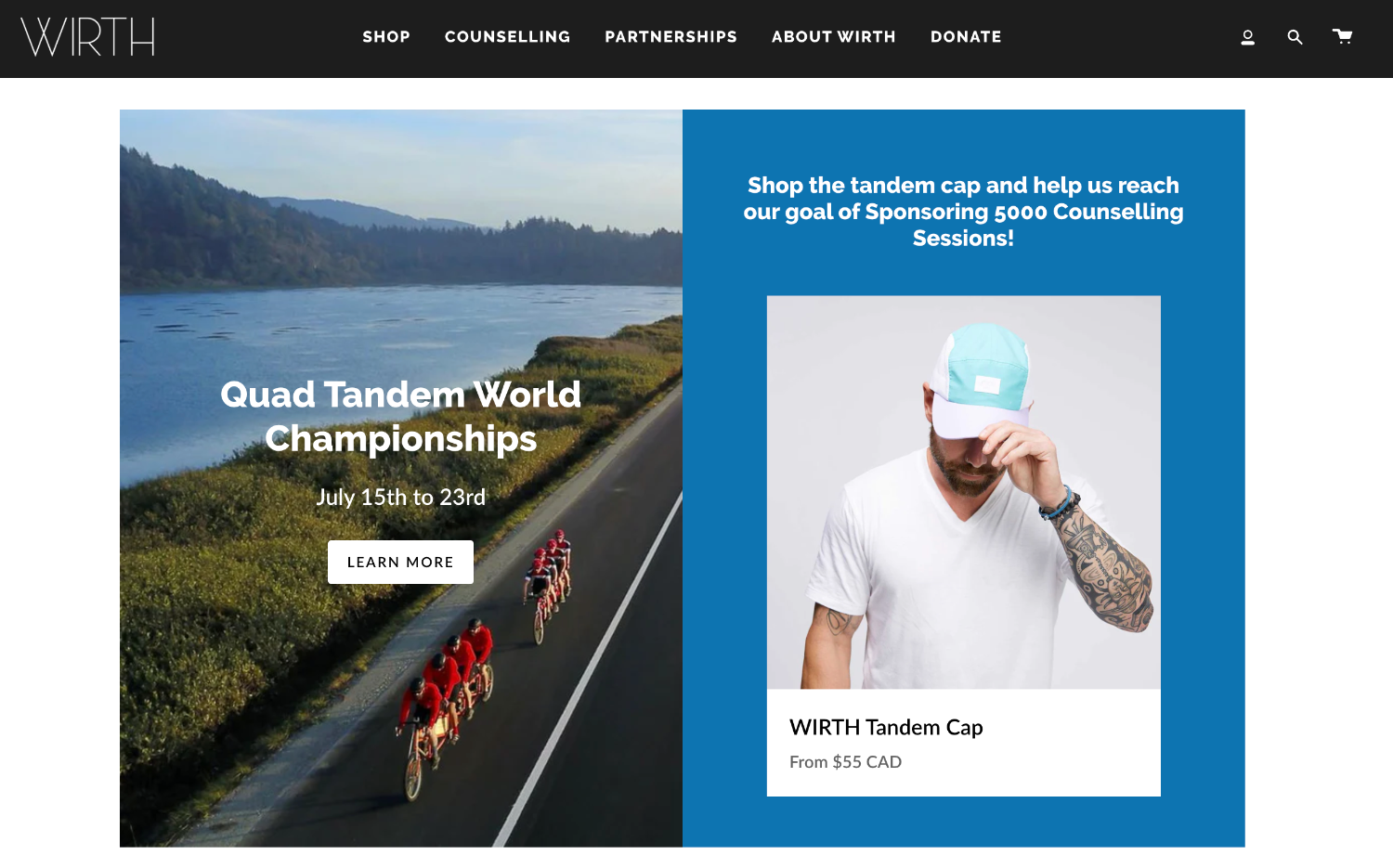
Dan Demsky, founder of Unbound Merino, advises other entrepreneurs to start with one “big hairy audacious goal” (BHAG) before breaking it down into achievable chunks. “From the BHAG, figure out where you could be in three to five years if things go extremely well,” he says.
After that, break those into yearly, then quarterly goals. “Three months is the perfect amount of time to conquer one meaningful and sizable project.”
2. Know your target audience
Understanding your target customer is the key to creating a brand that resonates with them. By conducting market research, you can uncover customer preferences and interests, such as which social media channels to frequent to discover products.
Create a buyer persona and get to know the slang they use and the other brands they gravitate toward. This will help you brand your business in a way that speaks their language.
3. Establish your unique value proposition
A unique value proposition (UVP), is your product’s competitive advantage. It describes how your product or service solves your customers’ pain points or meets their expectations better than the competition. Creating a UVP means understanding who the competition is, the needs of your customers, and what your business offers that others can’t.
✏️ Note: A unique selling proposition is similar, but it focuses on the products or services, whereas a UVP encompasses the full brand offering.
4. Identify your mission and core values
Customers are increasingly choosing to buy from ethical companies with a clear mission and values that align with their own. Consumer trends have been leaning this way for years, with Gen Z and future Gen Alpha consumers leading the charge. Featuring core values on your website and in your marketing messaging can influence how customers and investors feel about your brand.

5. Define your brand voice
A brand’s voice is its unique personality. If you think about your brand like a person, what would it be like? How would it speak? To develop a distinct voice and tone for your brand, create buyer personas that help you understand how your customers communicate.
Your brand’s voice could be charismatic and bold or formal and motivating. A brand voice that resonates with a target customer fosters connection, community, and trust.
6. Tell your brand story
Once you’ve established your UVP, core values, and voice, piece them together to tell your brand story. The most obvious place to tell this is on an About Us page on your website, but mission-driven companies and founder brands may choose to incorporate this story into their marketing strategy.
A brand’s story can be one and the same with the founder’s own, or a more formal story that details the mission and history of the company.
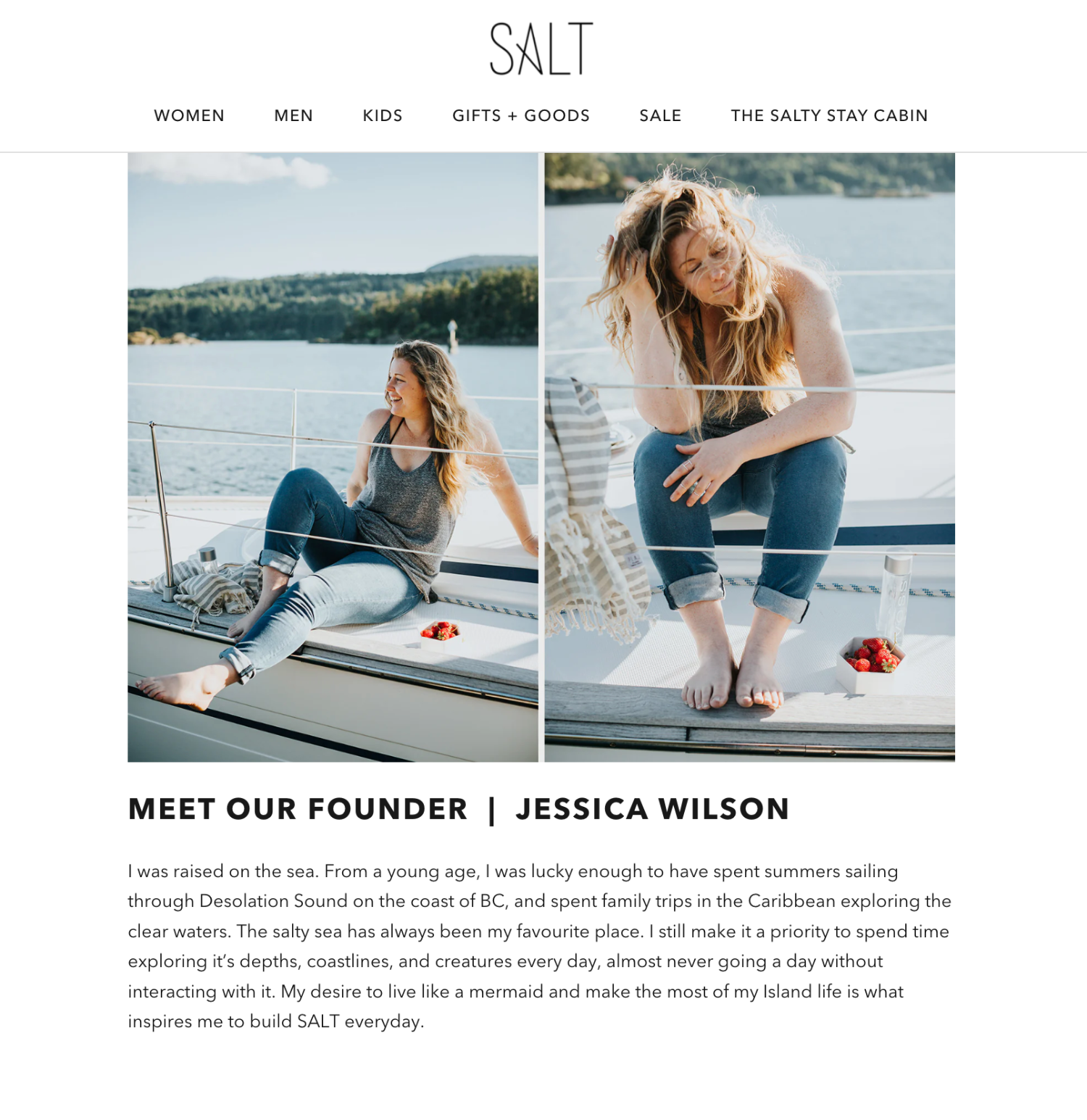
Polysleep used storytelling to set itself apart from the competition. "The goal was really to humanize a brand, make people realize that we’re actually a team,” says co-founder Jeremiah Curvers. “[We wanted] to connect the users to Polysleep as a brand, and not just as a company that sells mattresses."
7. Create brand assets
Brand assets include your brand’s logo, as well as other design elements that align with your style guide. These may be fonts, color palettes, photo treatments, graphic shapes, social media templates, and secondary logos and wordmarks.
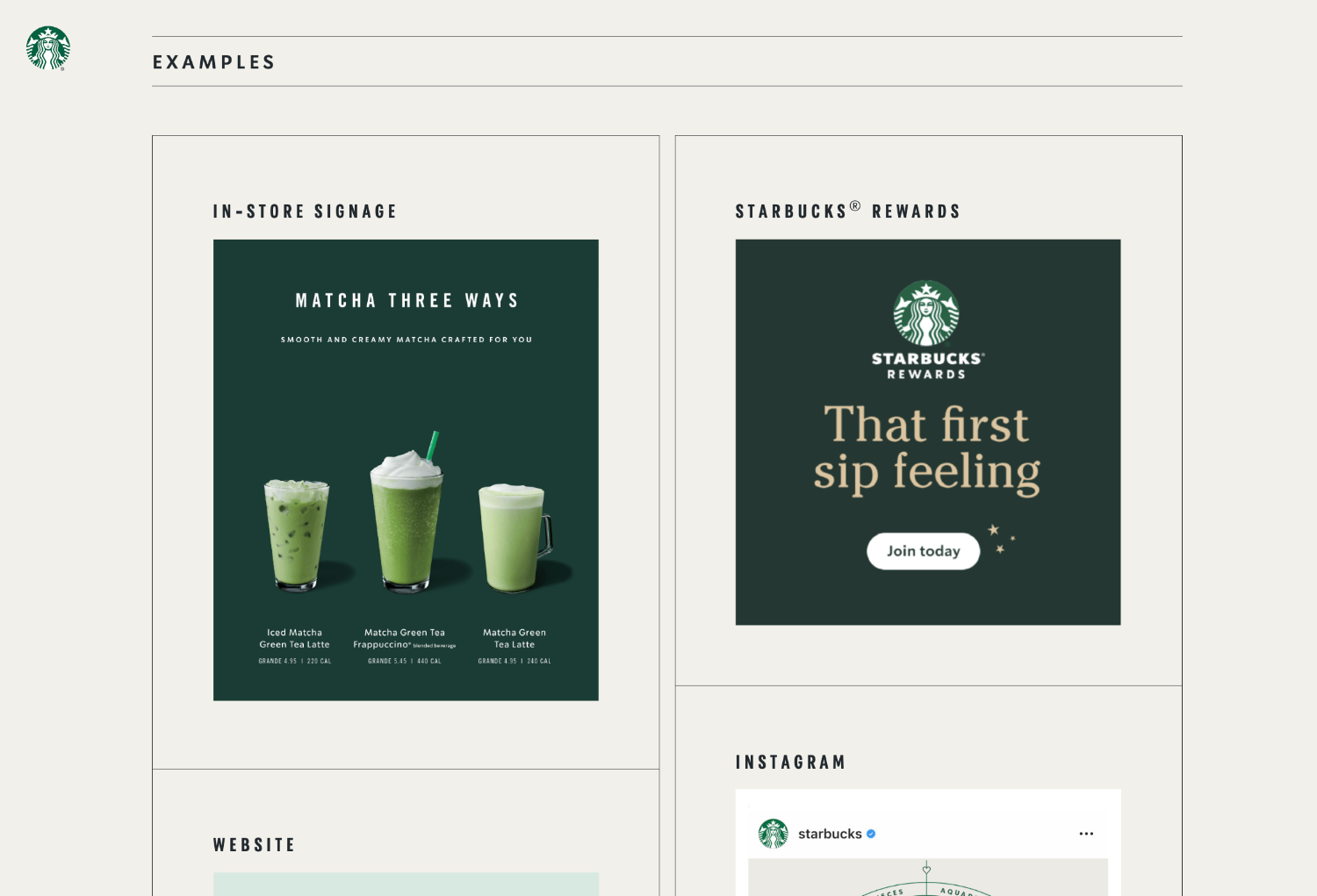
This becomes an asset library that works alongside your style guide, used by anyone speaking about your brand—from staff to partners to press. A comprehensive asset library can help maintain a consistent brand image.
8. Apply your brand across channels
Establishing your brand in the market means being loud, proud, and consistent on every channel. All the decisions you’ve made and assets you’ve created to this point will now be put into play. Apply your brand across social channels, your website, online ads, email marketing templates, retail displays, marketing materials, and everywhere potential customers may find you.
9. Reinforce your brand
A set of brand guidelines will help you maintain brand consistency as you grow. This is a document that will guide future decisions, from creating marketing materials for a campaign to expanding your business into new markets. Use this guide to stay focused on your mission and values.
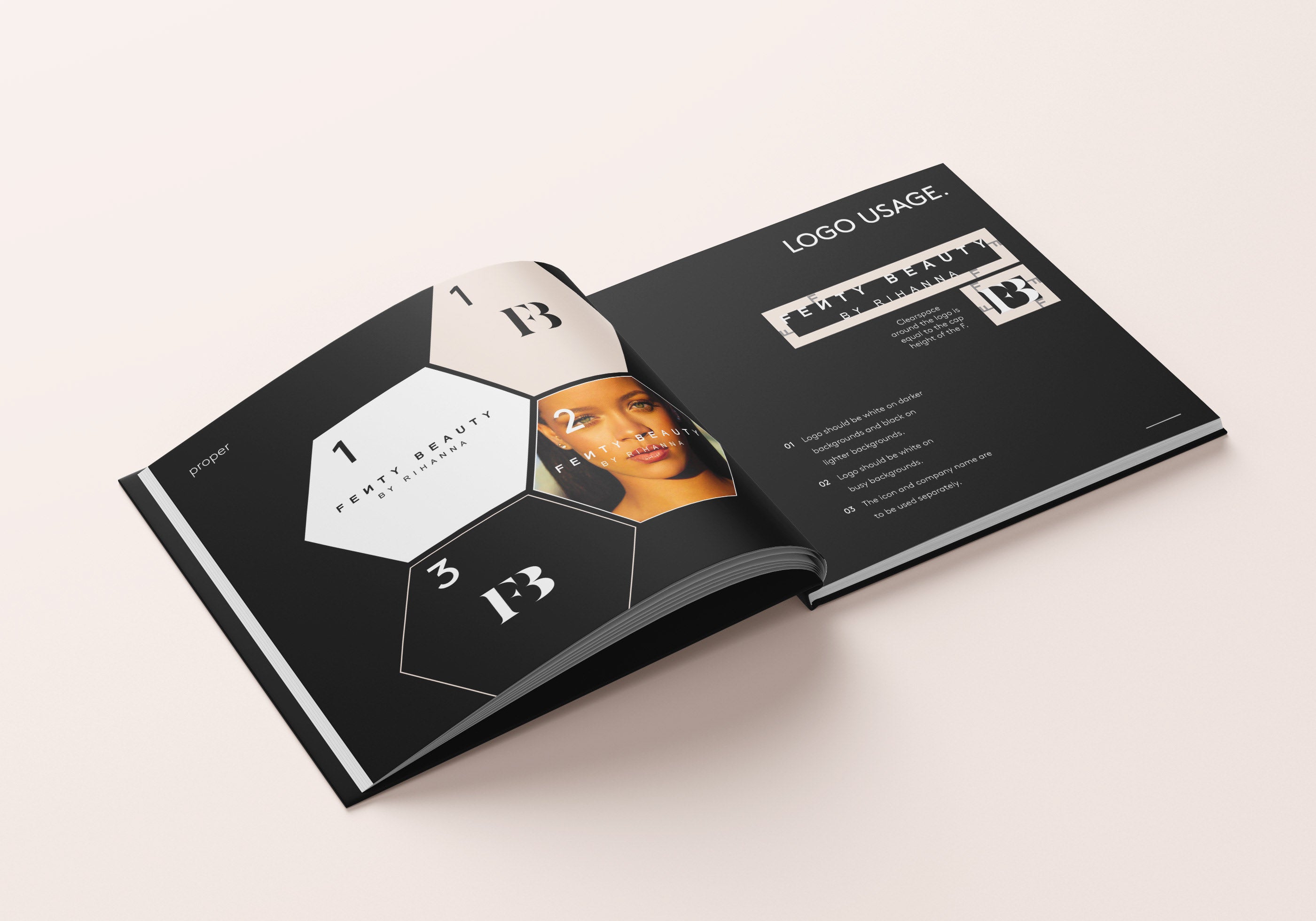
How to brand your business on social media
Whether you’re trying to attract an audience or keep existing customers engaged, there’s no better place than your active social media accounts to do so. It’s often the place where users discover new products and brands. Certain platforms have even become the go-to for discoverability.
TikTok users are 1.5 times more likely to buy a product they discovered on the platform compared to other social networks. And, 80% of Pinterest users report they discover new brands and products through the platform.
That’s why it’s important to brand your business on social media with the same vigor you would apply to your website.
Tips for branding your social media presence
There are a few best practices when it comes to applying your brand on social channels:
- Optimize your profile page with SEO in mind for descriptions and use a size-appropriate version of your logo for the avatar.
- Be consistent with posting, not only through frequency of content but also considering how each post communicates your brand.
- Don’t set it and forget it. Your voice also shines through in how you engage with social media comments and DMs.
- Your logo isn’t as important here. Forget pushing products and heavily featuring your branding—social media is a place for your brand personality to shine. Entertain, don’t sell.
3 brand examples to inspire your own
Want to see the results of effective branding? Look no further than successful brands around you. Who’s dominating the space? What makes their branding resonate with their audiences? Get inspired by these three brands winning in their respective industries.
1. The Honey Pot
 The Honey Pot is a sexual wellness and feminine care brand that’s made breaking taboos central to its brand. Its beautiful visual identity and product photography aside, The Honey Pot’s brand truly shines through its frank tone of voice and messaging: a carefully crafted balance between educational and funny. “Our content might have an angle of humor, but then the caption, for example, will be deeply insightful, with reference points that are backed in science,” says VP of marketing Giovanna Alfieri.
The Honey Pot is a sexual wellness and feminine care brand that’s made breaking taboos central to its brand. Its beautiful visual identity and product photography aside, The Honey Pot’s brand truly shines through its frank tone of voice and messaging: a carefully crafted balance between educational and funny. “Our content might have an angle of humor, but then the caption, for example, will be deeply insightful, with reference points that are backed in science,” says VP of marketing Giovanna Alfieri.
 The Honey Pot invests in influencer marketing, choosing ambassadors that can evoke the brand’s unique tone of voice—and creators with stories that mirror those of its target customer. This approach builds trust with the community it aims to reach.
The Honey Pot invests in influencer marketing, choosing ambassadors that can evoke the brand’s unique tone of voice—and creators with stories that mirror those of its target customer. This approach builds trust with the community it aims to reach.
2. Heyday Canning
 What’s so special about Heyday Canning is that its market research didn’t prompt it to follow the norm. In fact, the exercise highlighted the need to do something bold and daring in an industry stuck in time. Heyday took an everyday product and spiced it up—both inside the can and out.
What’s so special about Heyday Canning is that its market research didn’t prompt it to follow the norm. In fact, the exercise highlighted the need to do something bold and daring in an industry stuck in time. Heyday took an everyday product and spiced it up—both inside the can and out.
The brand chose a modern color palette and suite of fonts along with a playful tone of voice to reach a specific type of customer. The consistency of the brand can be seen through Heyday’s approach to social media content, including daring viral campaigns like its NYC Bean Swap.
3. Unbound Merino
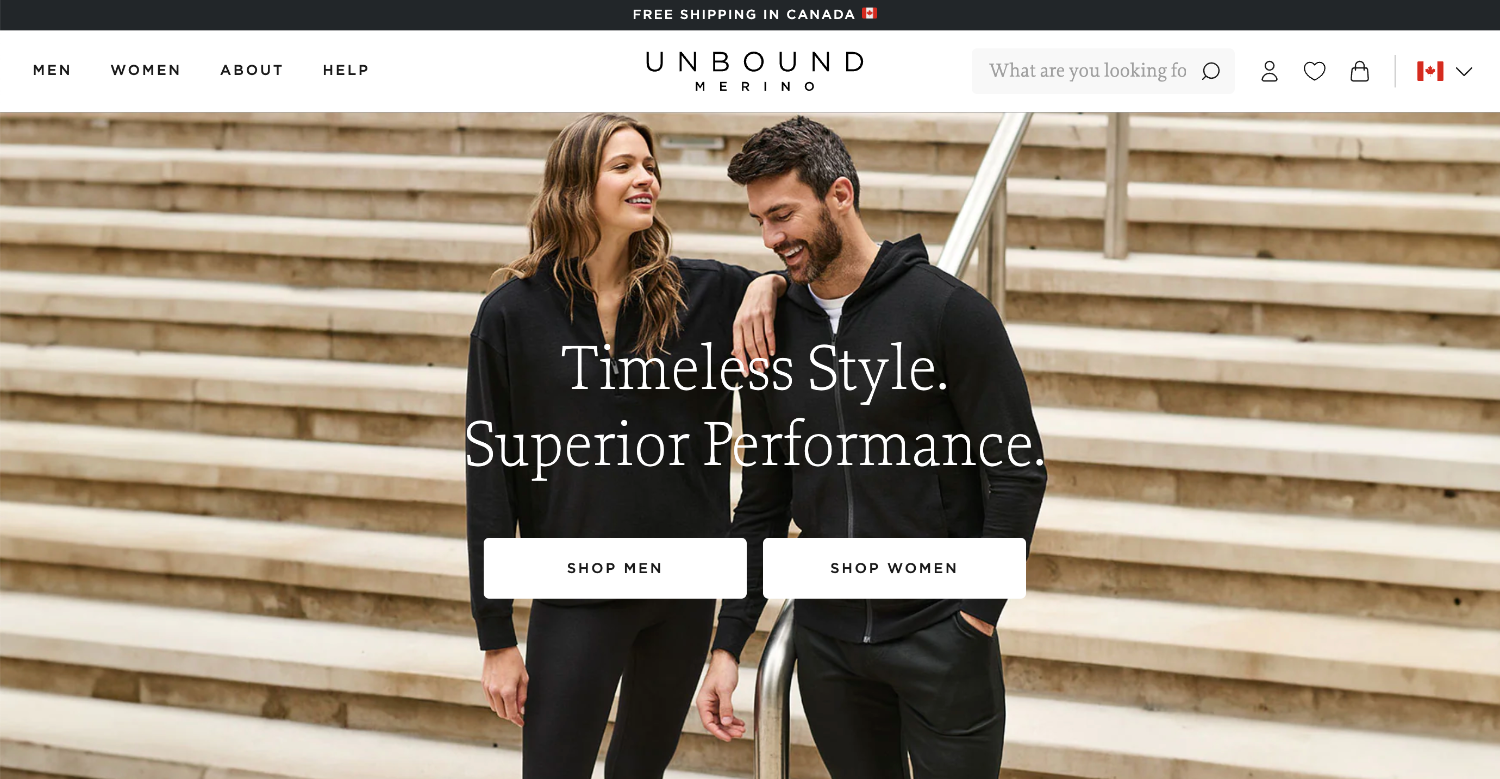 Unbound Merino’s branding is as unfussy as its products. This apparel brand aims to communicate product benefits like versatility, ease of care, and timeless design. That messaging is not only explicitly called out in website copy, it’s also reflected in the brand’s laid back visual identity.
Unbound Merino’s branding is as unfussy as its products. This apparel brand aims to communicate product benefits like versatility, ease of care, and timeless design. That messaging is not only explicitly called out in website copy, it’s also reflected in the brand’s laid back visual identity.
On social media, Unbound carries that messaging through its content. It partners with influencers and uses UGC to reflect the faces of its ideal customers back to them.
Best practices for building a brand
Every brand is unique, and the experience of building yours will be, too. But there are a few general guidelines that every business can apply.
Be consistent
Building a recognizable brand relies on showing up consistently. When you set expectations with your customers, be sure you can meet them every time they engage with your brand. Consistent branding isn’t just about using the same palette across your social channels. It’s also about a consistent ordering experience and a customer service experience that’s predictable.
Always center your customer
Your customer is the true hero of your brand story. Remember to center their experiences throughout every business and branding decision you make. Brand your business in a way that appeals to your target market and reflects its values. Everything from marketing campaigns to website design should be approached from the customer’s perspective.
Remember: Less is more
“One issue I see the most is logos that are very busy with lots of color and without any refinement,” says designer Skyler Hestnes. Simple branding will be the most versatile across several mediums. This doesn’t mean you can’t have fun with it—just make sure your logo and branding assets work at every size, from website favicons to massive billboards. Even the most “out there” brands are crystal clear on their brand image.
Even though Omsom’s homepage is busy and bright, if you dissect its elements, it focuses on a tight color palette and clean type-based logo that reads clearly among the chaos:

Use tools to support your strategy
There are many free tools available online to help businesses on a budget craft a professional brand. And, if you’re a team of one, they can even save you time or simplify marketing efforts. But use caution with AI tools specifically, says Polysleep’s Jerimiah Curvers. “Really spend the time to ensure it makes sense for the user,” he says, “because it’s easy to pump gibberish that will not bring value to the user, and ultimately that will not help your brand."
Building a brand that reaches your target audience
Now that you know how to brand your business, it’s time to put that learning to work. As you set out to build your own successful brand, take the long view: How will your branding hold up in five years? What about 10? As you evolve your brand to suit trends or consumer preferences, what values will remain consistent? No matter how much you grow, never lose sight of your brand’s goals, mission, and customer.
Read more
- 9 Dropshipping Coffee Suppliers
- How To Market Your Business on Social Media: 15 Effective Ways
- How To Start a Business in Wisconsin in 8 Easy Steps
- What Is Intellectual Property? Definition and Guide
- How To Write a Value Proposition in 5 Simple Steps
- The TikTok Logo: History and Why It Works (2022)
- What Are Business Core Values and How Do You Choose Yours?
- The Instagram Logo: History and Why It Works (2022)
- The Starbucks Logo: History and Why It Works (2022)
- Website Builder & Website Maker by Shopify
How to brand your business FAQ
What is the best way to brand your business?
The best way to brand your business is by following a few key steps:
- Establish a mission statement, set of values, and brand voice.
- Create a strong logo and visual identity.
- Develop a website that reflects your brand values and messaging.
- Use social media to connect with customers and build community.
- Create a unique customer experience.
- Stay consistent with your branding across all channels.
What are the 7 stages of the branding process?
The seven stages of the branding process are:
- Research: Understand your target market.
- Positioning: Create an identity that is distinct from your competitors.
- Brand strategy: Develop a strategy to communicate your brand identity to the market.
- Brand identity design: Design a logo, brand style guide, and brand assets to represent your brand visually.
- Brand promotion: Spread the word about your brand through advertising, social media, and other channels.
- Brand management: Monitor and adjust your branding as trends and consumer tastes change.
- Brand evaluation: Measure the success of your branding efforts.
What are 3 tips for successful branding?
- Establish a clear brand identity. Your brand identity should be clearly defined and communicated across all marketing channels. This includes your logo, colors, typography, messaging, and values.
- Be consistent. Offer the experience customers expect from you based on your brand promise—and show up consistently everywhere your brand appears.
- Use storytelling to connect. Use storytelling as a tool to create meaningful connections with customers who share your values or resonate with your experience.





